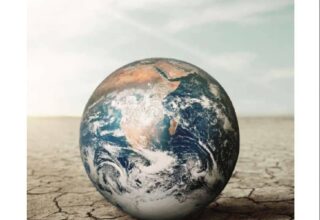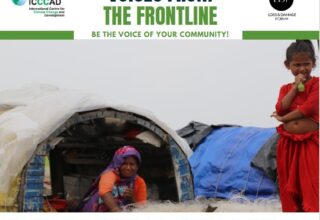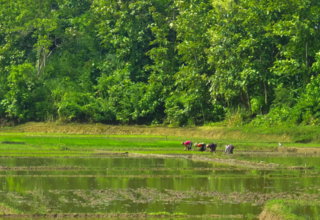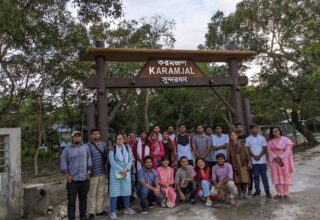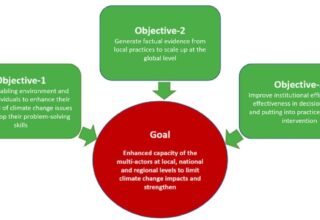
Extreme weather, an undesirable consequence of global climate change, is already seriously affecting the lives and livelihoods of people all around the world, especially in Bangladesh. A low-lying terrain and a high frequency of extreme events such as floods and tropical storms put Bangladesh and its 170 million people at a high risk in terms of climate vulnerability.
Indeed, Bangladesh ranks seventh out of 181 countries in respect of climate vulnerability on the Climate Risk Index. Despite our best efforts to limit GHG emissions, global climate change proceeds unabated. Climate change being inevitable, we are compelled to live with it. This necessitates improving adaptation and building resilience.
Adaptation implies going along with existing resources, but resilience entails acquiring new talents and maybe emerging stronger from the conflict. We know that the most vulnerable people are the ones who are most at risk from climate change, and that they are also the ones who have contributed the least to it.
Now is the time for actions to face the problem squarely and create resilience, before more people lose their lives or their livelihoods. Nations and people who are most vulnerable to the effects of climate change must be united and supported by the world community. Having been exposed to the elements for a long period now the people of Bangladesh had to learn to adapt and build resilience. Adaptation and mitigation are top priorities for both the government and the civil society in Bangladesh. There are several instances of effective government-led and community-based adaptation efforts, many of which are backed by international partners.
The first noteworthy achievement mentioned by the UN Climate Chief is adaptation to climate change impacts, which is now considered as vital as decreasing GHG emissions. Simultaneously, expanded technical assistance is now available for countries to manage climate change-related loss and damage, bolstering global efforts toward resilience building. Following COP26, a work program has been established to define the global target for adaptation, which will aid in the mitigation of climate extremes that are already occurring in all parts of the globe.
The supply of climate funding to low-income countries is considered top priority. Low-income countries are the most vulnerable to climate change impacts, although they contribute the least to GHG emissions. Adaptation is primarily funded by the Global Environment Facility (GEF) through the Least Developed Country Fund (LDCF) and the Special Climate Change Fund (SCCF). The United Nations Framework Convention on Climate Change (UNFCCC) seeks to raise $100 billion per year to help low-income nations adapt to the effects of climate change and build resilience.
However, current financial attempts have fallen well short of this goal. It is critical not only that the funds be provided, but also that access to those be made easier for those who are most in need of adaptation financing.
The recompense of people who have been harmed by climate change is the second priority. The Warsaw International Mechanism (WIM) specifies that individuals affected have the right to compensation when the limits of adaptation are reached and irreparable losses and damages ensue. High-income countries, particularly the United States, have impeded efforts to resolve the WIM’s finance issue.
Whether funds could be pulled off from GEF, reducing the amount of money available to low-income nations for adaptation, is a contentious subject. With a change in US leadership, recognizing the need for extra funding outside of GEF and identifying potential sources of funding may become more feasible.
Enhancing multi-level cooperation is the third priority. While worldwide policies on climate adaptation are considered and agreed upon, implementation is dependent on national and sub-national actions. Climate change adaptation, in particular, is context-dependent, which means that effective multi-level collaboration is reliant on local actors’ ability to initiate and sustain positive changes.
National Adaptation Plans (NAPs) is a tool that allows low-income countries to identify and address adaptation priorities. The development and mainstreaming of NAPs with the UN Sustainable Development Goals (SDGs) still requires assistance. Furthermore, measures for scaling up local adaptation information to inform NAPs are critically needed.
At the COP25 in Madrid, the promotion of a gender-responsive climate policy through the unanimously agreed-upon Gender Action Plan (GAP) was a major accomplishment. However, GAP lacks precise criteria and parameters for determining success. The setting of the fourth priority at COP26 has been consequent upon this. The fourth priority at COP26 is set to clearly define indicators and targets for tracking progress, as well as to guarantee that this success is built on by securing appropriate funds and having the political will at the national and sub-national levels to implement GAP.
The fifth priority should be to push for further climate justice legislation to be passed. While the GAP is undoubtedly a step in the right direction, other measures for those groups disproportionately affected by climate change, such as indigenous communities, marginalized groups, and young people, must be implemented. In addition to adopting new policies and mandates, setting clearly defined indicators and benchmarks for measuring progress is critical.
Adaptation is also a financial necessity. Investing in adaptation and the creativity that comes with it, according to the report of the Global Commission on Adaptation, can open up new doors and spur change all around the world. Adaptation has the potential to produce a triple dividend: it can prevent economic losses, generate positive results, and provide additional social and environmental advantages. There are some bright spots, but the response has been woefully inadequate so far.
Meanwhile, the climate crisis is already here: wildfires are destroying fragile habitats, city taps are running dry, droughts are scorching the land, and floods are destroying people’s homes and livelihoods. Climate change is affecting people all over the world, as recent events have demonstrated. In addition, if nothing is done, millions of people would be pushed deeper into poverty spurring violence and instability.
It’s a question of equity when it comes to adaptation and resilience. When dealing with affected groups, from residents of informal settlements in South Africa to coastal communities in Mauritius, the need for climate change equality becomes clear very quickly. While COPs have many flaws, the collaborative nature of dealing with climate change necessitates their creation if they do not already exist. Supporting the COP26 priorities could help alleviate the unavoidable burden of climate change on those who are disproportionately affected.
Originally this article was published on February 12, 2022 at Dhaka Tribune.
Author: Shahrina Akhtar is an agricultural scientist specializing in Agricultural, Environmental & Development Research working at the Krishi Gobeshona Foundation (KGF) based in Dhaka, Bangladesh.

